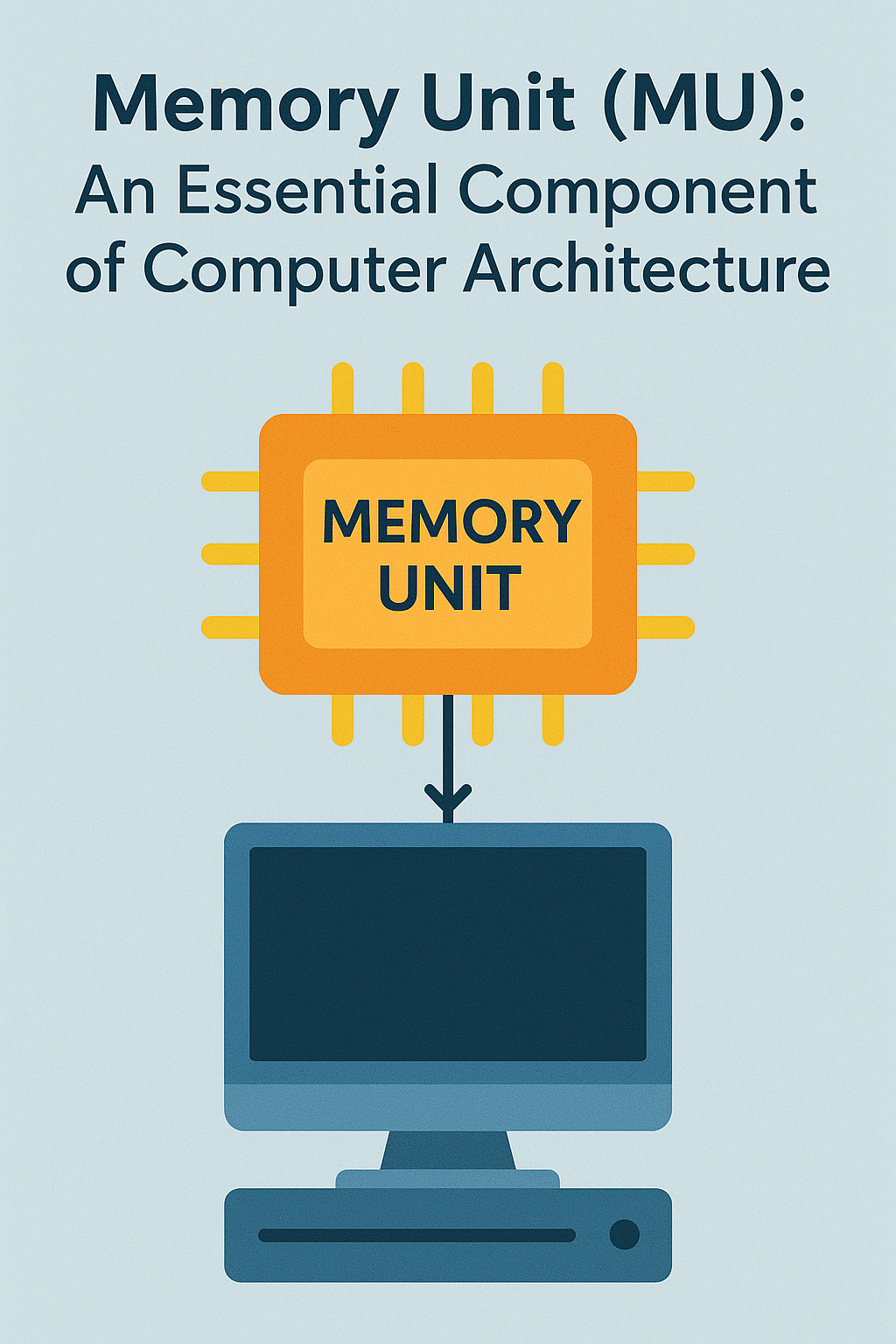The Memory Unit (MU) is a critical component of a computer system, responsible for storing data and instructions required for processing. In computing, memory is an essential part of the architecture that allows the Central Processing Unit (CPU) to access information quickly and efficiently, facilitating seamless data manipulation, storage, and retrieval.
Memory is organized in a hierarchical structure, with different types of memory serving various functions, from short-term data storage to long-term information preservation. Here’s an in-depth look at the Memory Unit, its types, functions, and importance in computer systems.
What is a Memory Unit?
A Memory Unit, or MU, is a part of a computer system where data and instructions are stored either temporarily or permanently. It allows for the efficient management of data flow between the processor and various types of storage, ensuring that information is readily available for processing. The MU’s capacity, speed, and reliability are critical factors that affect overall system performance.
The Memory Unit is typically categorized into two main types:
- Primary Memory (or Main Memory): This includes RAM (Random Access Memory) and ROM (Read-Only Memory) and is directly accessible by the CPU.
- Secondary Memory (or Auxiliary Storage): This includes hard drives, SSDs, and external storage devices, which provide additional storage capacity but are slower than primary memory.

Key Functions of the Memory Unit
The Memory Unit performs several essential functions within a computer system:
- Data Storage: The MU holds data that the CPU needs for immediate or future processing. This includes both user data and instructions for executing programs.
- Data Retrieval: The MU quickly retrieves stored data and instructions for the CPU, ensuring fast access to essential information.
- Instruction Fetching: The MU stores instructions from programs and provides them to the CPU as needed for execution.
- Temporary and Permanent Storage: While primary memory provides temporary storage (data is lost when power is turned off), secondary memory offers long-term storage that persists even when the device is powered off.
Types of Memory in the Memory Unit
- Primary Memory
- RAM (Random Access Memory): RAM is a type of volatile memory, meaning data is lost when the power is turned off. It serves as a temporary storage area that the CPU uses to store and access data quickly. RAM can be further divided into:
- DRAM (Dynamic RAM): Commonly used in main memory.
- SRAM (Static RAM): Faster and more expensive, often used in cache memory.
- ROM (Read-Only Memory): ROM is non-volatile memory that stores critical instructions, such as the boot firmware. Data in ROM is permanent and cannot be easily modified.
- RAM (Random Access Memory): RAM is a type of volatile memory, meaning data is lost when the power is turned off. It serves as a temporary storage area that the CPU uses to store and access data quickly. RAM can be further divided into:
- Secondary Memory
- Hard Disk Drive (HDD): A traditional storage device that uses spinning disks to read and write data. HDDs provide large storage capacities at a lower cost.
- Solid State Drive (SSD): A faster alternative to HDDs, using flash memory to store data with no moving parts. SSDs offer higher speed and reliability but are more expensive.
- Optical Drives: Use lasers to read data from discs like CDs, DVDs, or Blu-rays.
- USB Drives and External Storage: Portable memory options for additional storage and data transfer between devices.
- Cache Memory
- Cache memory is a small, high-speed memory located close to the CPU that stores frequently accessed data and instructions. This helps reduce the time taken to access data from main memory, improving processing speed.
- Registers
- Registers are small memory locations within the CPU that hold data and instructions temporarily during processing. They are the fastest form of memory but have very limited storage capacity.
Memory Unit Hierarchy
The memory hierarchy in a computer system is structured based on speed, cost, and capacity:
- Registers (fastest, lowest capacity, highest cost per bit)
- Cache Memory
- Main Memory (RAM)
- Secondary Memory (HDD, SSD)
This hierarchy allows the computer to balance speed and cost, using faster memory for frequently accessed data and slower, larger-capacity memory for long-term storage.
Importance of the Memory Unit in Computer Systems
The Memory Unit plays a crucial role in determining the overall performance of a computer. Here’s why it’s so important:
- Processing Speed: Fast memory access enables quick data retrieval, allowing the CPU to process instructions without delay.
- Multitasking: With adequate memory, a computer can handle multiple tasks simultaneously without slowing down, as it has enough resources to store and manage different processes.
- Data Integrity: The MU maintains data consistency and security, preventing data loss during processing and ensuring that stored data is available for future access.
- Efficient Data Flow: The memory unit manages data flow between various components, ensuring that data is available where and when it’s needed, which is essential for system stability.
Challenges in Memory Unit Design
While essential, the Memory Unit comes with its own set of challenges:
- Speed vs. Cost: Faster memory types (like cache) are expensive, so designers must balance cost constraints with performance needs.
- Energy Consumption: Memory, especially DRAM, can consume significant power, affecting battery life in portable devices.
- Scalability: As applications grow in complexity, memory units need to scale up in capacity, speed, and efficiency to meet demand.
- Data Security: Ensuring data stored in memory is secure, especially in systems prone to unauthorized access or data leaks.
Conclusion
The Memory Unit is a cornerstone of computer architecture, providing storage and access to data that the CPU needs for processing. By balancing speed, cost, and capacity across different memory types, the MU enables efficient and reliable operation of computer systems. As computing demands increase, innovations in memory technology continue to drive improvements in performance, making memory units faster, more efficient, and capable of supporting more advanced applications.
